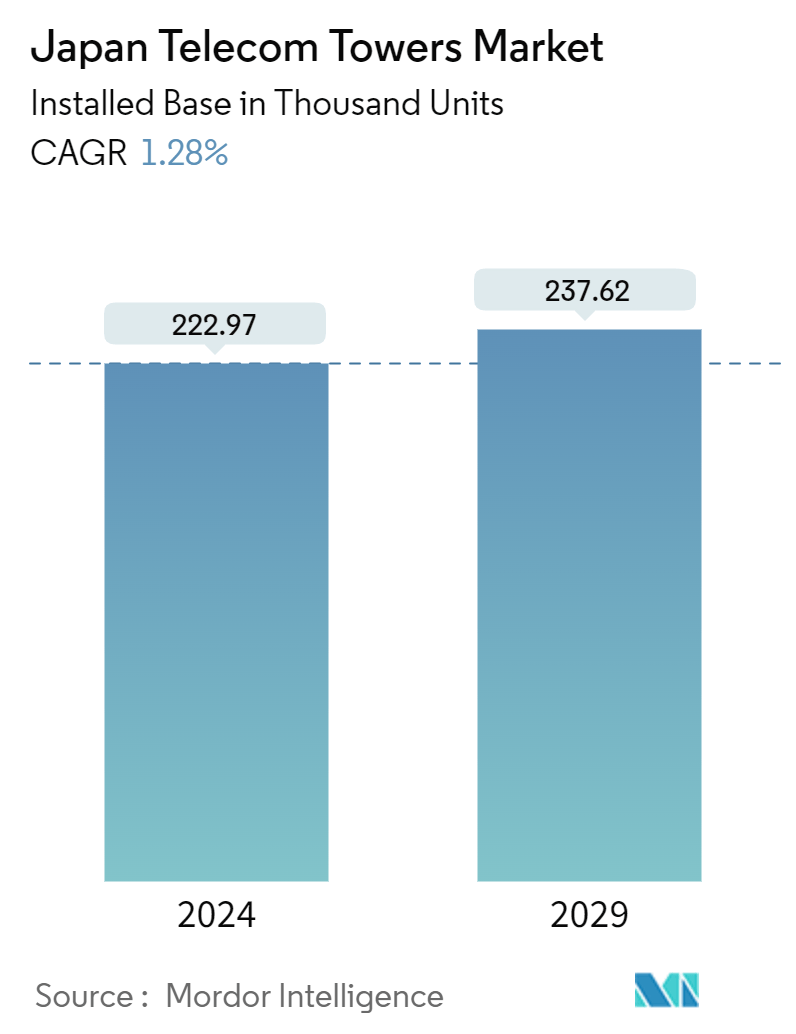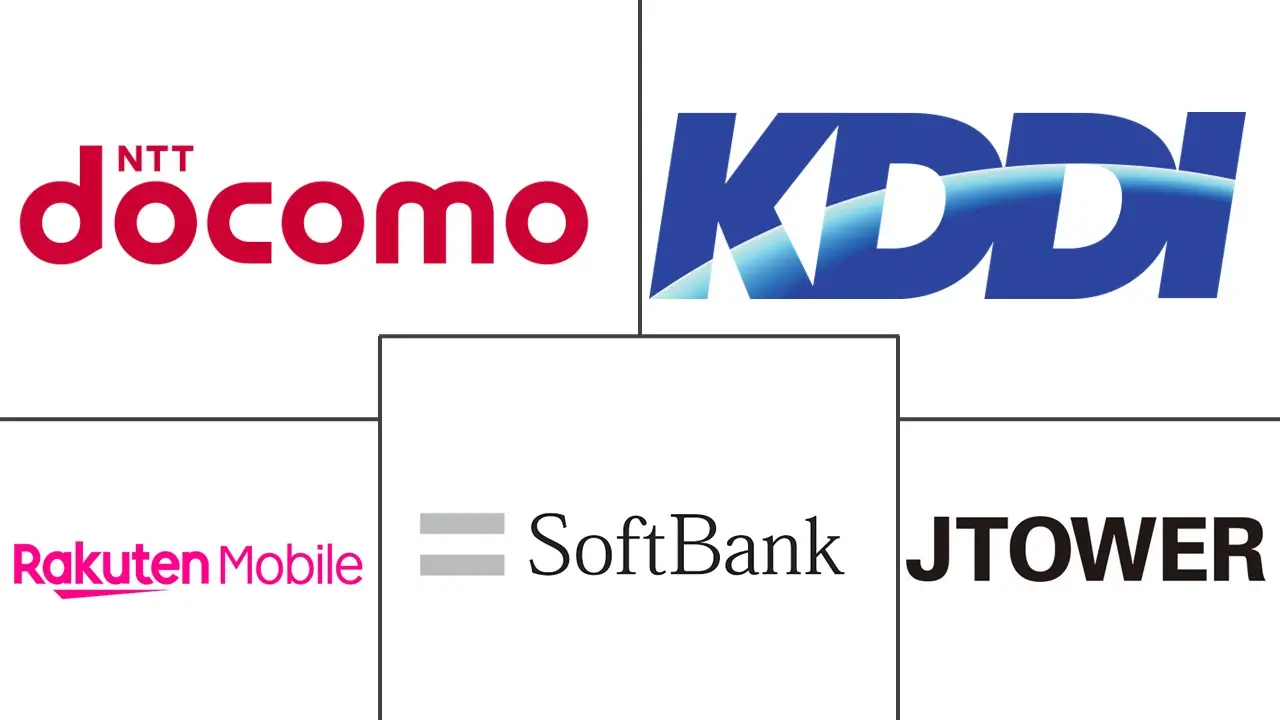Market Size of Japan Telecom Towers Industry

| Study Period | 2019 - 2029 |
| Base Year For Estimation | 2023 |
| Forecast Data Period | 2024 - 2029 |
| Market Volume (2024) | 222.97 Thousand units |
| Market Volume (2029) | 237.62 Thousand units |
| CAGR (2024 - 2029) | 1.28 % |
| Market Concentration | Medium |
Major Players
*Disclaimer: Major Players sorted in no particular order |
Japan Telecom Towers Market Analysis
The Japan Telecom Towers Market size in terms of installed base is expected to grow from 222.97 Thousand units in 2024 to 237.62 Thousand units by 2029, at a CAGR of 1.28% during the forecast period (2024-2029).
- Japan has a high mobile penetration rate, with a significant number of subscribers. The rising popularity of smartphones, coupled with increased data usage and a demand for reliable network coverage, is fueling the need for more telecom towers. This expansion aims to meet the country's growing mobile connectivity requirements. According to the Ministry of Internal Affairs and Communications (Japan), nearly 79% of the Japanese population owned a smartphone in 2023, marking a significant rise in smartphone penetration since the mid-2010s.
- Moreover, renowned for its cutting-edge telecommunication infrastructure, Japan has an extensive network of fiber-optic cables and high-speed broadband. As the appetite for high-speed internet and data services surges, telecom towers become pivotal in extending and optimizing wireless network coverage to cater to these demands.
- Additionally, Japan's urban areas are densely populated and witness a heightened demand for swift and reliable mobile connectivity. This demand supports individual communication and business and public service needs. Additional telecom towers are imperative to cater to these densely populated regions. For context, the World Bank notes that Japan's urbanization has stabilized at approximately 92.04% over the last decade. Given Japan's population of 126 million, this statistic indicates that under 10% reside outside urban locales. Japan's urbanization rate significantly surpasses the global average of 55%.
- Furthermore, leading the charge in technological innovations, Japan strongly emphasizes rolling out 5G networks. Telecom towers are vital for this 5G infrastructure, as they facilitate the small-cell technology essential for high-frequency transmissions. They also ensure the coverage and capacity needed to achieve the anticipated speeds and low latency of 5G. As of March 2024, the Ministry of Internal Affairs and Communications (Japan) reported nearly 92.4 million 5G subscriptions. Major mobile carriers in Japan, including NTT Docomo, KDDI, SoftBank, and Rakuten Mobile, commenced their commercial 5G rollouts in 2020, initially targeting urban centers.
- Additionally, given Japan's susceptibility to natural disasters like earthquakes, typhoons, and tsunamis, a robust telecom tower network becomes paramount. Such a network ensures communication lines remain open during and post-disaster events. Telecom towers, especially those with backup power, redundancy, and disaster recovery features, play a vital role in public safety and emergency responses. For instance, the National Research Institute for Earth Science and Disaster Resilience highlighted that in 2023, Japan faced six earthquakes with a magnitude of five or more, as per the Japan Meteorological Agency (JMA).
- However, telecom towers require an uninterrupted power supply to ensure 24x7 network availability, fulfilled mainly by electricity, batteries, and diesel generators. The environmental impact of telecom towers has always been a significant concern. Radiation from mobile towers has been an important issue, and it is recognized as an unseen and subtle pollutant affecting life forms in multiple ways. Moreover, using non-renewable sources to run power systems, such as diesel, significantly pollutes the environment.

